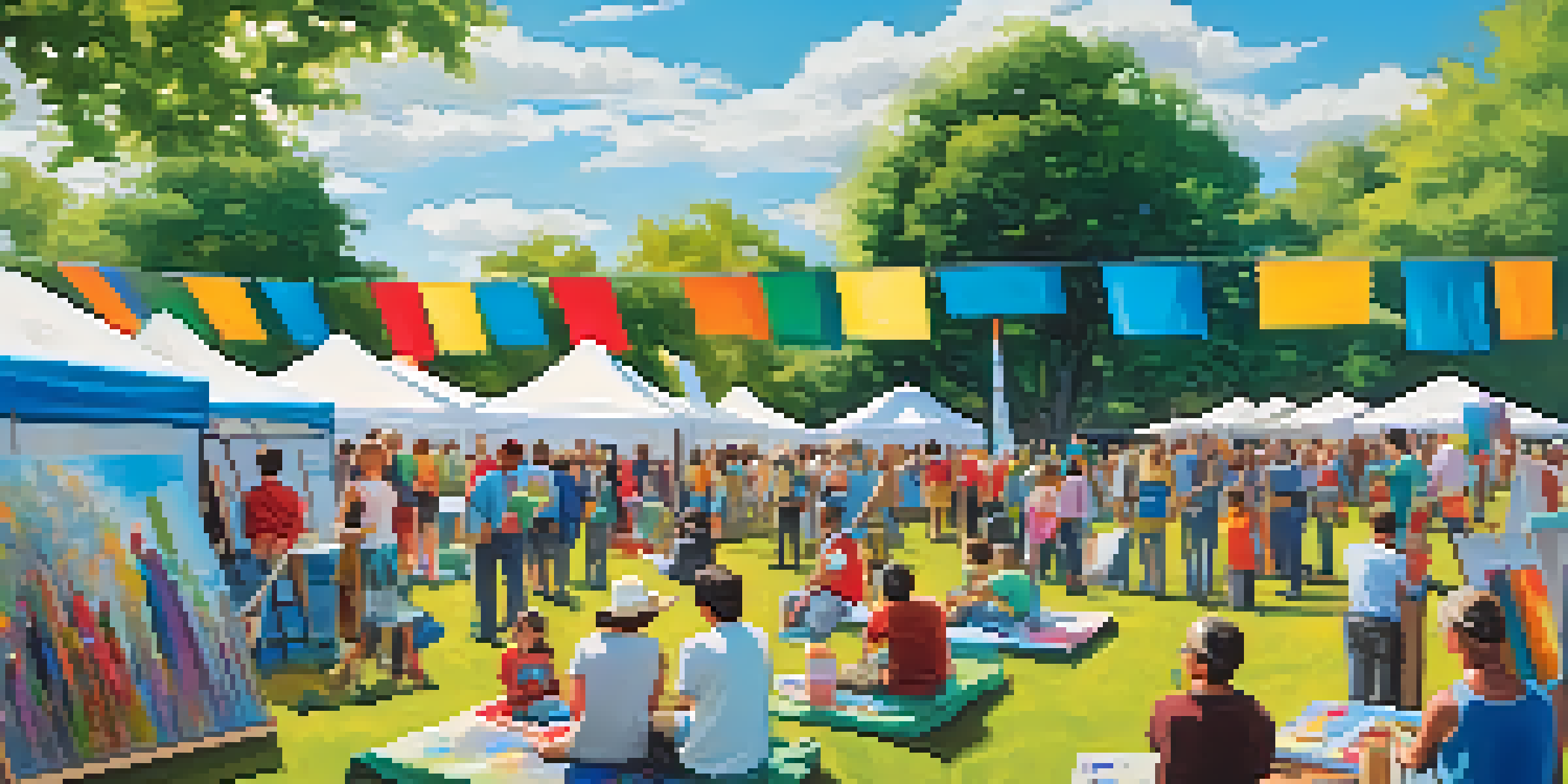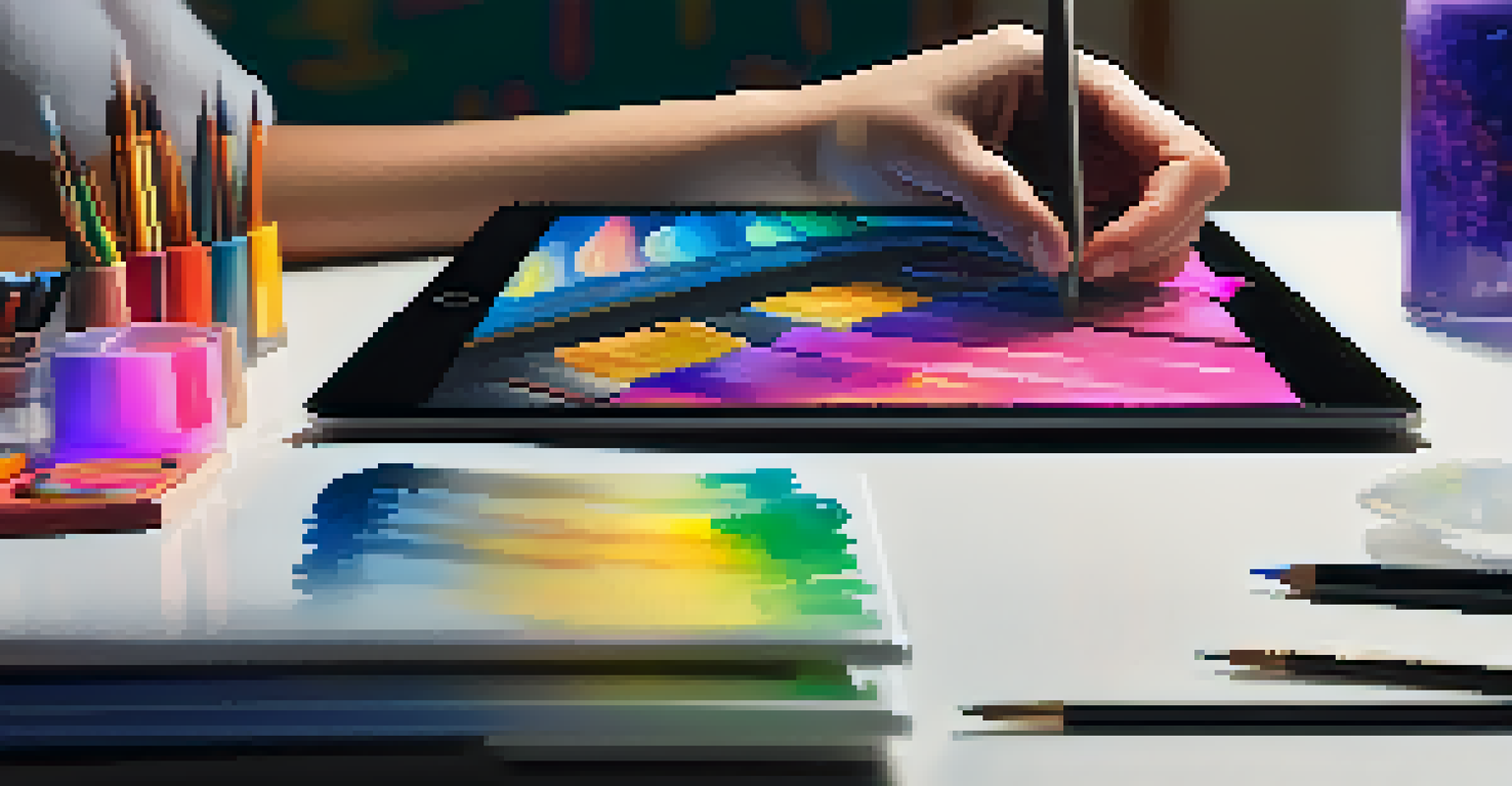Integrating Arts into the Curriculum: A San Jose Perspective

The Importance of Arts in Education Today
In today's rapidly changing world, the importance of arts in education cannot be overstated. Arts integration fosters creativity, critical thinking, and problem-solving skills, which are essential for students' overall development. This approach not only enriches students' learning experiences but also prepares them to navigate complex challenges in life.
Art is not what you see, but what you make others see.
San Jose, known for its vibrant culture and innovation, is an ideal setting for integrating arts into the curriculum. Local schools are recognizing that incorporating art forms—such as music, theater, and visual arts—can enhance traditional subjects like math and science. For example, using music to teach rhythm can deepen students' understanding of fractions.
Moreover, arts integration promotes emotional intelligence and social skills among students. By engaging in collaborative projects, students learn to communicate effectively, respect diverse perspectives, and build empathy. These skills are invaluable as they prepare for future careers and interactions in a diverse society.
Current Arts Integration Initiatives in San Jose
San Jose has several ongoing initiatives aimed at integrating arts into the educational landscape. Programs like the Arts Education Collaborative bring together educators, artists, and community organizations to create engaging, arts-infused curricula. These collaborations ensure that students not only have access to arts education but also understand its relevance in their lives.

One standout initiative is the San Jose Museum of Art's outreach program, which offers hands-on experiences for students. By visiting the museum and participating in workshops, students gain a deeper appreciation for visual arts while developing critical thinking skills. These experiences often translate into improved performance in other subjects, showcasing the interconnectedness of learning.
Arts Enhance Student Learning
Integrating arts into education fosters creativity and critical thinking, enriching students' overall learning experiences.
Additionally, local schools are embracing technology to enhance arts integration. For instance, using digital tools for creating music or visual art allows students to express their creativity while developing important tech skills. This combination of arts and technology prepares students for the demands of the modern workforce.
Challenges Faced in Arts Integration
Despite the numerous benefits, integrating arts into the curriculum is not without its challenges. One significant hurdle is the lack of funding for arts programs, which can lead to under-resourced classrooms. Schools often prioritize core subjects like math and reading, leaving arts education on the back burner.
The arts are not a luxury; they are an essential part of education and life. They teach us to think creatively and solve problems.
Moreover, many teachers feel unprepared to incorporate arts into their teaching. They may lack training in arts education or hesitate to step outside their comfort zones. This reluctance can stifle creativity and limit the potential for innovative teaching methods that engage students.
Finally, measuring the effectiveness of arts integration can be difficult. Standardized tests primarily assess academic skills, leaving little room to evaluate students' creative abilities or the impact of arts on their learning. This creates a challenge for schools trying to justify the inclusion of arts in their curricula.
Success Stories: Schools Leading the Way
Several schools in San Jose are shining examples of successful arts integration. For instance, a local elementary school has improved student engagement by incorporating drama into its literacy program. Students perform skits based on the books they read, which not only boosts comprehension but also ignites a passion for storytelling.
Another success story involves a high school that introduced visual arts into its science curriculum. Students created infographics to depict complex scientific concepts, thus enhancing their understanding while developing their artistic skills. This approach not only makes learning more enjoyable but also helps students retain information more effectively.
Community Support is Vital
Local organizations and community involvement play a crucial role in providing resources and funding for arts education.
These success stories reflect a growing recognition of the value of arts integration in education. As more schools adopt similar practices, the hope is that it will inspire a broader movement toward embracing creativity as a fundamental aspect of learning.
The Role of Community in Supporting Arts Education
Community involvement is crucial for the success of arts integration in schools. Local organizations, artists, and parents can provide valuable resources and support for arts programs. By collaborating with schools, they help to create enriching experiences that extend beyond the classroom.
In San Jose, partnerships between schools and community organizations have led to exciting opportunities for students. For example, local theaters often offer workshops and performances that allow students to explore the performing arts firsthand. Such experiences not only enhance students' understanding of the arts but also foster a sense of belonging within the community.
Moreover, community support can help raise funds for arts programs that schools might struggle to finance. Fundraising events, donations, and sponsorships from local businesses can significantly impact the quality and sustainability of arts education in San Jose.
Future Directions for Arts Integration in San Jose
Looking ahead, the future of arts integration in San Jose appears promising. As educational leaders recognize the importance of a well-rounded curriculum, we can expect to see more schools adopting arts-infused approaches. This shift will likely include professional development for teachers to equip them with the skills needed for successful implementation.
Innovative technology will also play a significant role in shaping the future of arts education. Virtual reality and digital platforms can provide students with immersive experiences that enhance their learning. By combining traditional art forms with cutting-edge technology, educators can create dynamic and engaging learning environments.
Challenges in Arts Integration
Despite its benefits, arts integration faces challenges such as funding shortages and the need for teacher training.
Ultimately, the goal is to ensure that all students have access to quality arts education. By continuing to advocate for the integration of arts into the curriculum, San Jose can serve as a model for other communities, demonstrating the profound impact that arts education can have on students' lives.
Conclusion: Embracing Arts Integration for a Brighter Future
In conclusion, integrating arts into the curriculum in San Jose is not just about making education more enjoyable; it's about preparing students for a complex world. The skills developed through arts integration—creativity, collaboration, and critical thinking—are essential for success in any career path. By embracing this approach, we are nurturing a generation of well-rounded individuals.
The success stories, community involvement, and innovative programs highlight the potential of arts integration to transform education. As more schools prioritize this approach, the benefits will ripple through the community, fostering a culture that values creativity and expression.

Ultimately, a commitment to integrating arts into the curriculum ensures that students are not only academically proficient but also socially and emotionally intelligent. This holistic approach to education is what will pave the way for a brighter future for San Jose's students.